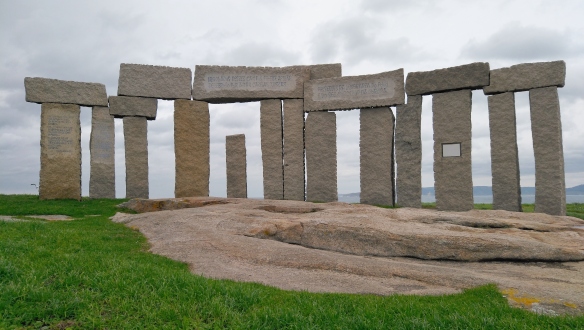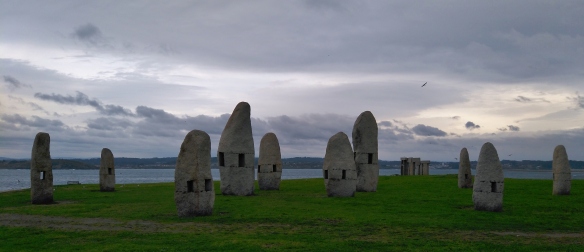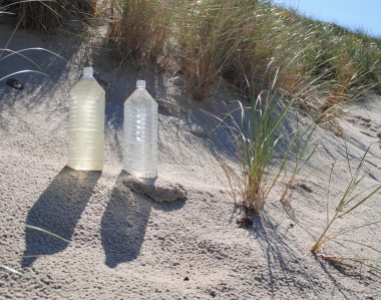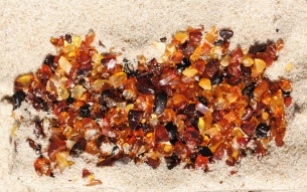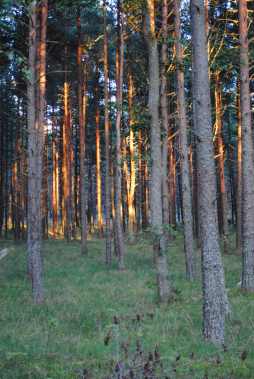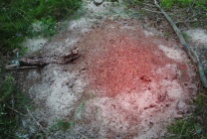
Despite it remoteness, St Kilda, is globally connected.

Through shared histories, oceans and skies

with flight maritime transports we congregate
nearly 1 million birds
Northern Gannet, Atlantic Puffin, Northern Fulmar, Manx Shearwater, Storm Petrel, Leach’s Petrel, Kitiwake, Guillemot, Razorbill, Great Skua
summer
at the archipelago
Hirta, Dun, Soay, Boreray.

Remote Life
Collect Bird
Cleit Dry
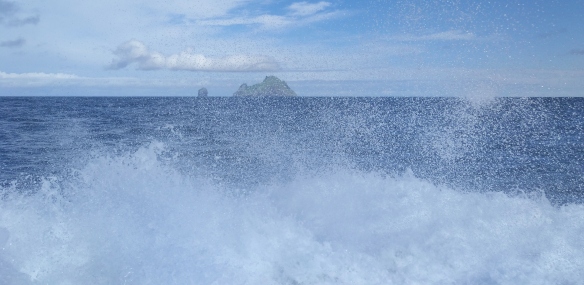
Yet we wont linger on Hirta but head to the world of Boreray

Through
wave
wind

and wonder

we reach
Stac Lee

look back
Hirta
with anticipation
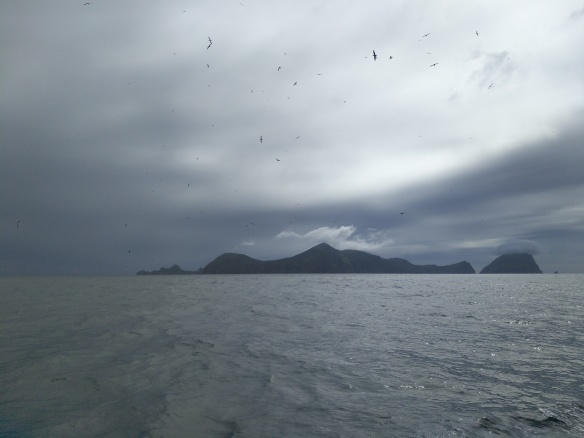
before crossing
beneath
sea cliffs
thrumming
krok krok krok krok krok krok krok krok
krok krok krok krok krok krok krok krok
krok krok krok krok krok krok krok krok
soaring
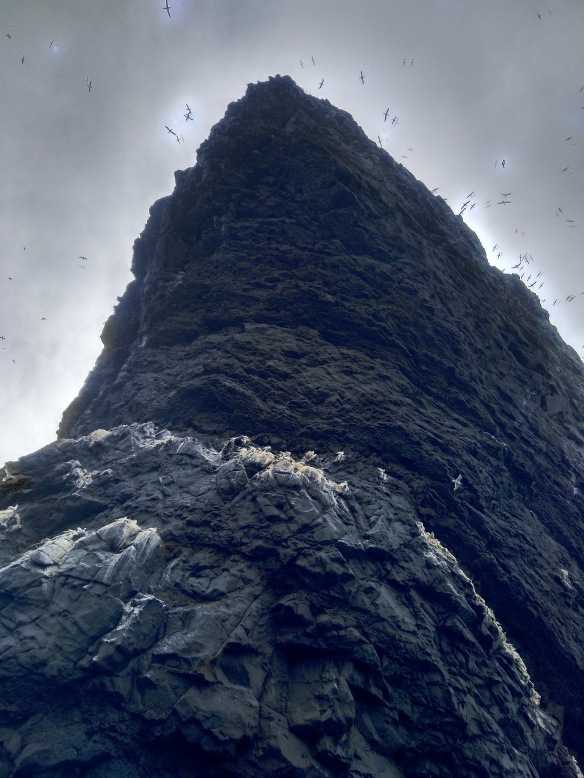
sweeping
crucifix

filled
vision

wards
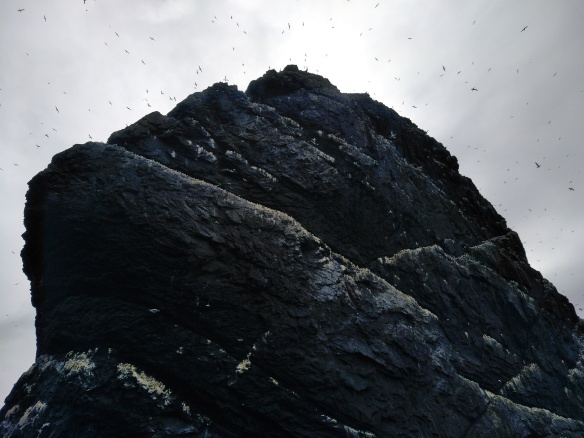
pulse of the world
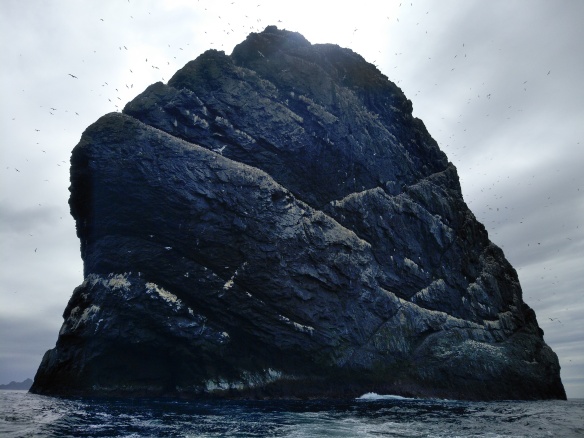
receeding

further

from

memories
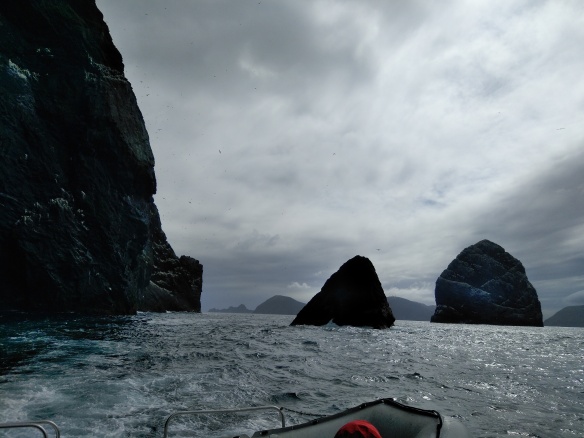
navigate dangerous waters

voices voiceless
witches whispers

kroK kroK kroK kroK kroK kroK kroK kroK kroK kroK kroK kroKk roK kroK kroK kroK

‘a great noise like that made by a gannet,
but much louder when shutting its mouth’

‘A storm rose, and that, together with the size of the bird
and the noise it made led them to think it was a witch.’

‘they were beating it for an hour with two large stones before it was dead’
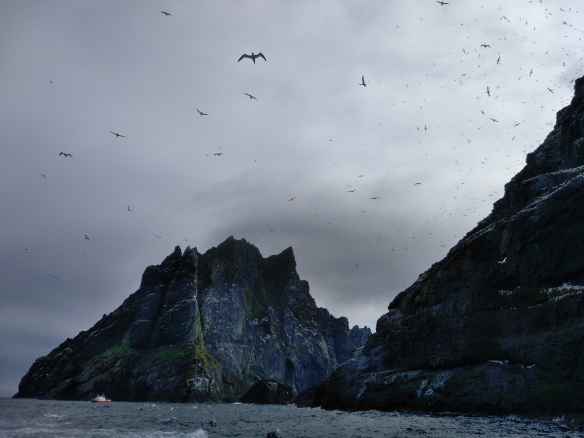
‘he was the most frightened of all the men, and advised the killing of it.’
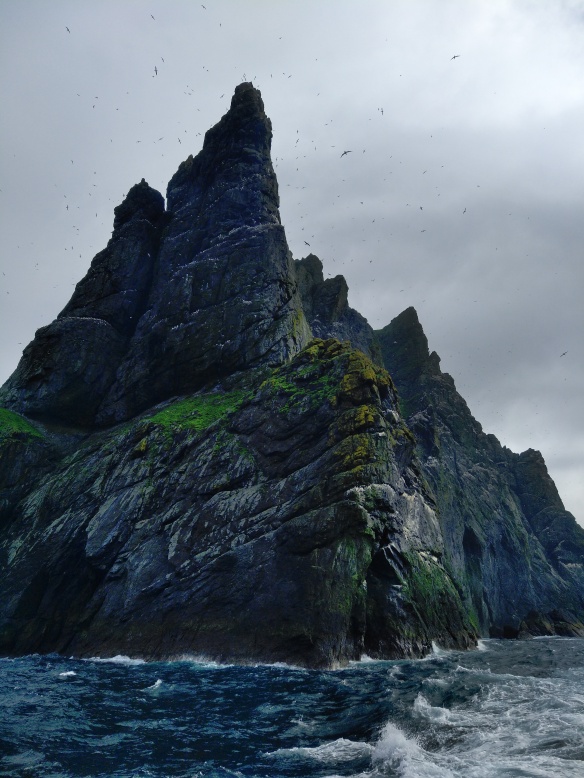
‘they killed the bird on the third day after it was caught’

Can we ever leave
the world
of birds and witches,

now unclear
which is which,

Bird as person,
bird sustains life
person as bird.
The collection of eggs and hunting of birds provided a significant amount of sustenance to those living on Hirta. Stone shelters, Cleits, were built and used to air dry the birds for consumption later. Climbing cliffs and seasonal stays in bothies on the archipelagos other islands and stacks to hunt was part of the strategy for sustaining life.
Stac an Àrmainn is the highest sea stack (196 m) in the UK and is the location of at least two powerful tales.
One tells of the group of three men and eight boys from Hirta who were stranded here in 1728 for 9 months. Upon returning they were to find that during their absence most of the community had died, all bar 4 adults and 26 children, from small pox.
The second tale, from about 1840, is of the death of what was probably the last Garefowl (Great Auk) in Scotland, when three men allegedly thought it to be a witch, only a few years before the species became extinct.
The quotes above are details of the St Kilda witch account, taken from a letter by Henry Evans, and can be found in:
Harvie-Brown, J A 1888 Vertebrate Fauna of the Outer Hebrides p 158-59.
How faithful the details of the story are can be debated but there was certainly a strong folklore which may have provided a context. An interesting overview of witches can be found here:
and a broader context can be found here:
Campbell, J G 1902 Witchcraft and Second Sight in the Highlands & Islands of Scotland : Tales and Traditions collected entirely from Oral Sources. Glasgow.
Seeing a Great Auk in Scotland in the first half of the 19th century would probably have been a rare occurrence, numbers already depleted, and with the last small colonies on Iceland some distance – so there may have been no familiarity with this species of bird among the men on Stac an Àrmainn. Whether the killing of the last Great Auk in Scotland as a witch (presumably in a shape shifted form) is true or not, today we are faced with the certainty if we do not do things differently other species will become extinct and St Kilda and the wider world it represents will be poorer for such losses.
How will we explain to future generations, what will undoubtedly seem 170 years in the future as, unjustifiable behaviours which lead to such losses. Seemingly enlightened, we may not fear witches, but through our behaviours we make our offerings to other gods of consumption and waste. They may not be so overt but our brutalities can be small, long and incremental.
Listen for the whispers….
I was privileged to journey to St Kilda earlier this year with the wonderful Kilda Cruises a great highly knowledgeable team.
For more details about St Kilda, please visit, the National Trust for Scotland website, the St Kilda website and the UNESCO St Kilda World Heritage Site
If St Kilda is not possible for you, another option to consider is the journey to Ailsa Craig, some details can be found in another post
Imaginary Island – journey through the south west.

